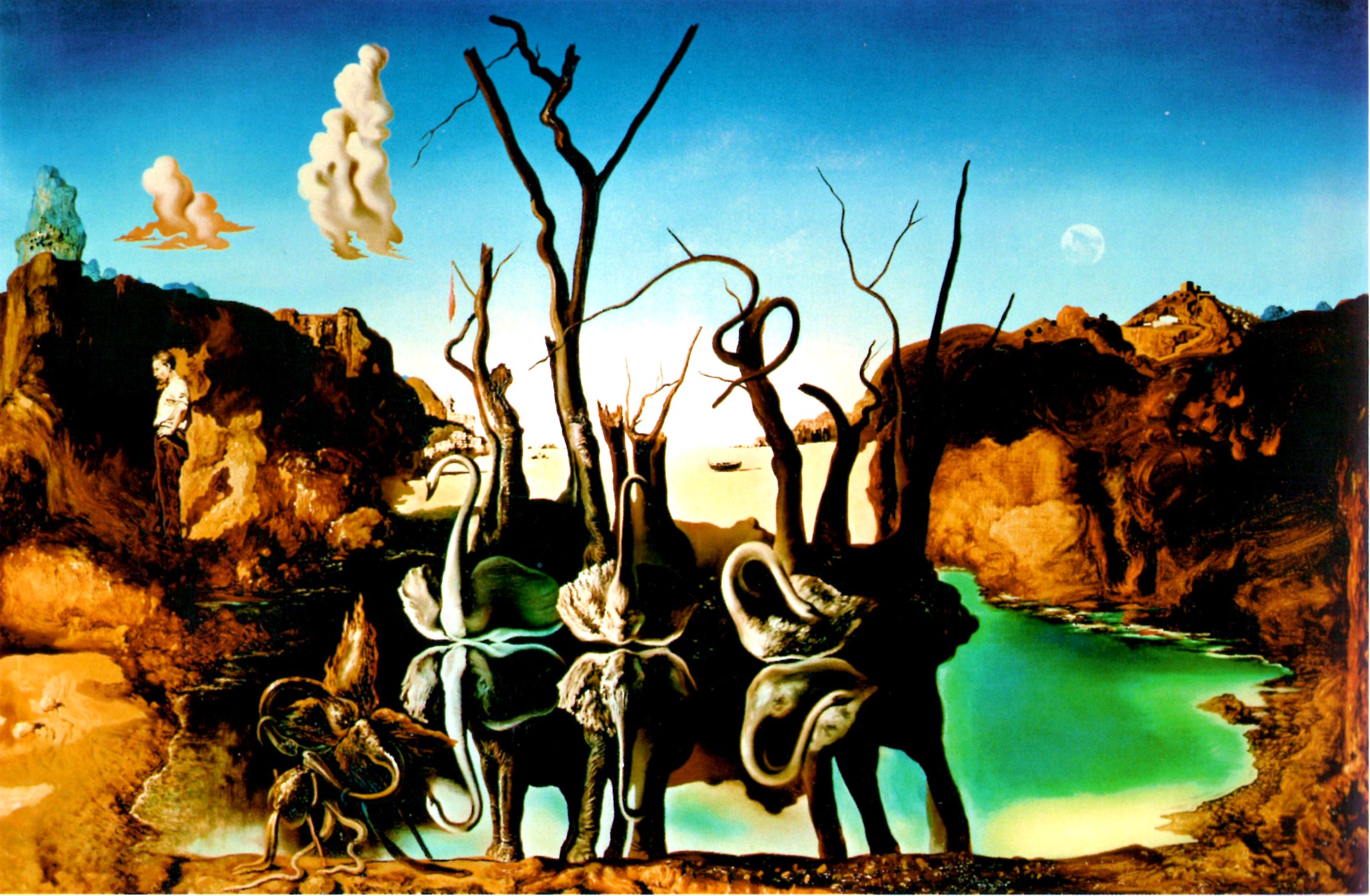Dali Helps Scientists Crack Our Brain Code
Scientists at Glasgow University have established a world first by cracking the communication code of our brains
Kenneth Macdonald | April 21, 2016
The work has been led by Prof Philippe Schyns, the head of Glasgow's school of psychology, with more than a little help from Voltaire and Salvador Dali.
How Dali's mind worked is a matter of continuing conjecture. But one of his works has helped unlock how our minds work. Or more precisely, how our brains see.
 |
| "Swans Reflecting Elephants." Source: http://sdapicap.blogspot.com/2012/11/swans-reflecting-elephants.html |
 |
| "Slave Market with the Disappearing Bust of Voltaire, 1940 by Salvador Dali" Source: http://www.dalipaintings.net/slave-market-with-the-disappearing-bust-of-voltaire.jsp |
<more at http://www.bbc.com/news/uk-scotland-glasgow-west-36105245; related articles and links: http://www.scotsman.com/future-scotland/tech/glasgow-university-scientists-crack-brain-enigma-code-1-4107889 (Glasgow University scientists crack brain “Enigma code”. April 22, 2016) and http://www.nature.com/articles/srep17681 (Tracing the Flow of Perceptual Features in an Algorithmic Brain Network. Robin A. A. Ince, Nicola J. van Rijsbergen, Gregor Thut, Guillaume A. Rousselet, Joachim Gross, Stefano Panzeri and Philippe G. Schyns. Scientific Reports 5, Article number: 17681 (2015). doi:10.1038/srep17681. [Abstract: The model of the brain as an information processing machine is a profound hypothesis in which neuroscience, psychology and theory of computation are now deeply rooted. Modern neuroscience aims to model the brain as a network of densely interconnected functional nodes. However, to model the dynamic information processing mechanisms of perception and cognition, it is imperative to understand brain networks at an algorithmic level–i.e. as the information flow that network nodes code and communicate. Here, using innovative methods (Directed Feature Information), we reconstructed examples of possible algorithmic brain networks that code and communicate the specific features underlying two distinct perceptions of the same ambiguous picture. In each observer, we identified a network architecture comprising one occipito-temporal hub where the features underlying both perceptual decisions dynamically converge. Our focus on detailed information flow represents an important step towards a new brain algorithmics to model the mechanisms of perception and cognition.])>

No comments:
Post a Comment